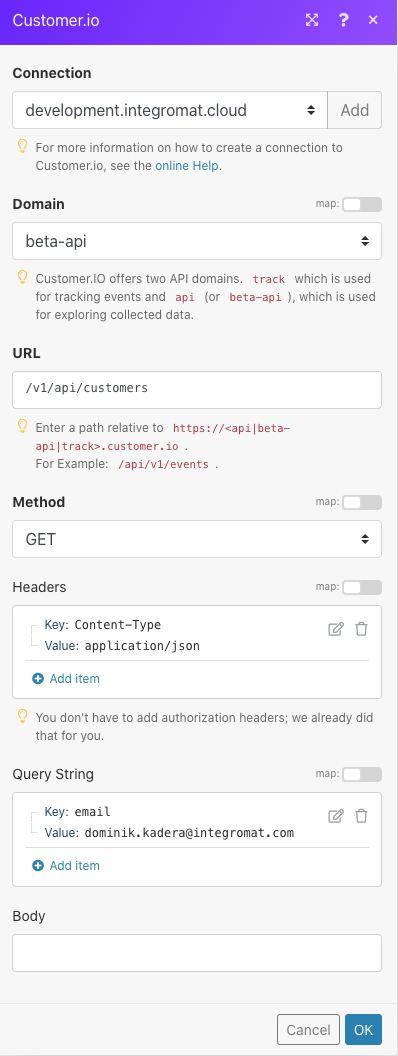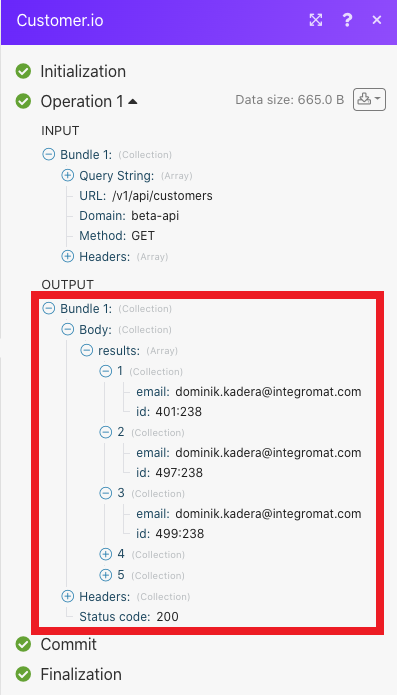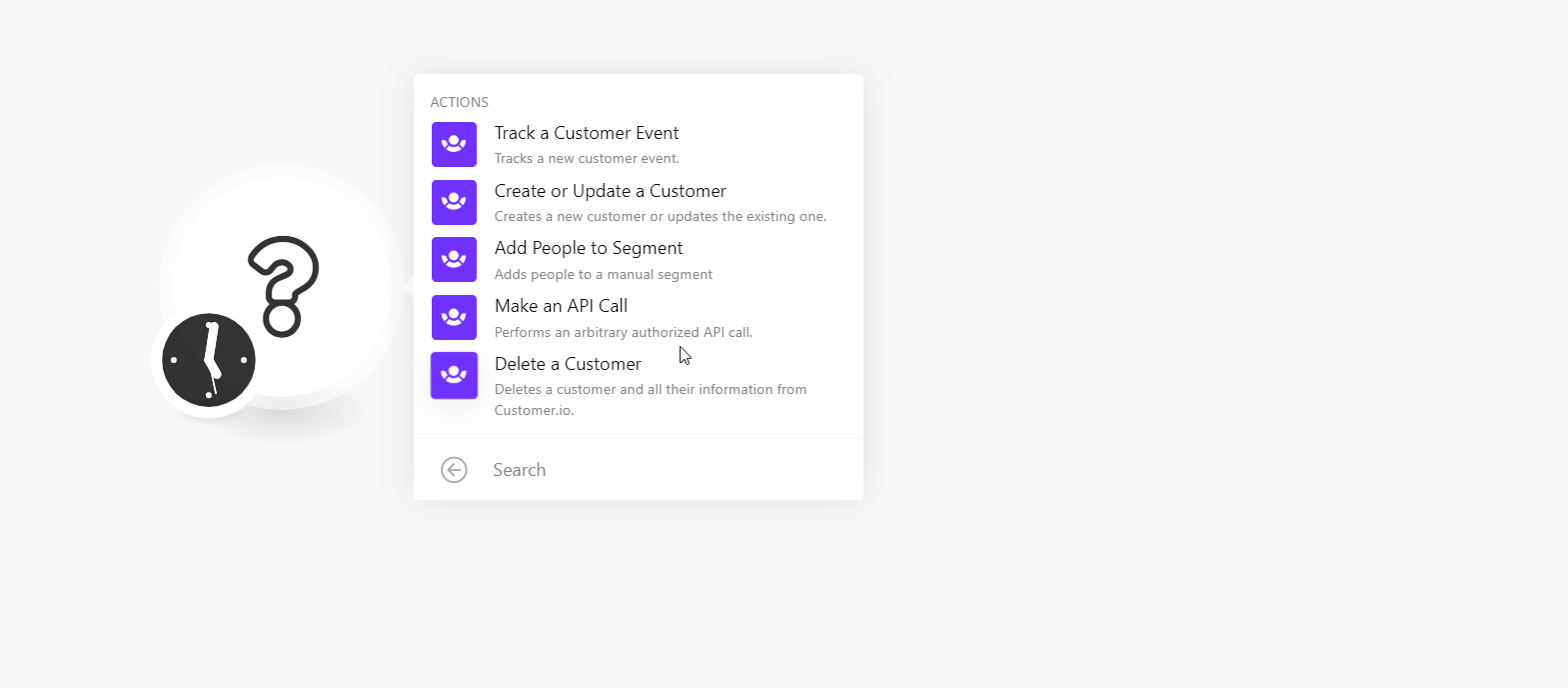The Customer.io modules allow you to track, create, update, and delete a customer event and customers in your Customer.io account.
Prerequisites
-
A Customer.io account
In order to use Customer.io with Boost.space Integrator, it is necessary to have a Customer.io account. If you do not have one, you can create a Customer.io account at customer.io/signup.
![[Note]](https://docs.boost.space/wp-content/themes/bsdocs/docs-parser/HTML/css/image/note.png) |
Note |
|---|---|
|
The module dialog fields that are displayed in bold (in the Boost.space Integrator scenario, not in this documentation article) are mandatory! |
To connect your Customer.io account to Boost.space Integrator you need to obtain the Site ID and API Key from your Customer.io account and insert it in the Create a connection dialog in the Boost.space Integrator module.
-
Log in to your Customer.io account and open your Dashboard.
-
Click Integrations > API .
-
Copy the Site ID and API Key to your clipboard.
-
Go to Boost.space Integrator and open the Customer.io module’s Create a connection dialog.
-
In the Connection name field, enter a name for the connection.
-
In the Site ID and Secret API Key fields, enter the Site ID and secret API key copied in step 3 respectively. Click Continue.
The connection has been established.
Tracks a new customer event.
|
Connection |
|
|
Customer ID |
Enter the Customer ID whose events you want to track. |
|
Event Name |
Enter the event name which you want to track. |
|
Event Type |
Enter the event type. For example, to view the page events, enter page. |
|
Data |
Enter the custom data to include with the event. For example, |
Creates a new customer or updates the existing one.
|
Connection |
|
|
Customer ID |
Enter the Customer ID for the new customer or the existing customer you want to update. |
|
|
Enter the email address of the customer. |
|
Created At |
Enter the ID at which the customer is created. |
|
Attributes |
Adds people to a manual segment.
|
Connection |
|
|
Segment ID |
Enter the Segment ID to which you want to add the people. |
|
Customer IDs |
Add the Customer IDs you want to add to the Segment ID. |
Performs an arbitrary authorized API call.
|
Connection |
||||
|
Domain |
Select the domain whose API calls you are making:
|
|||
|
URL |
Enter a path relative to
|
|||
|
Method |
Select the HTTP method you want to use: GET to retrieve information for an entry. POST to create a new entry. PUT to update/replace an existing entry. PATCH to make a partial entry update. DELETE to delete an entry. |
|||
|
Headers |
Enter the desired request headers. You don’t have to add authorization headers; we already did that for you. |
|||
|
Query String |
Enter the request query string. |
|||
|
Body |
Enter the body content for your API call. |
The following API call returns all tasks from your Customer.io account:
URL:
/v1/api/customers
Method:
GET

Matches of the search can be found in the module’s Output under Bundle > Body > results.
In our example, 5 were returned:

Deletes a customer and all their information from Customer.io.
|
Connection |
|
|
Customer ID |
Enter the Customer ID you want to delete. |


